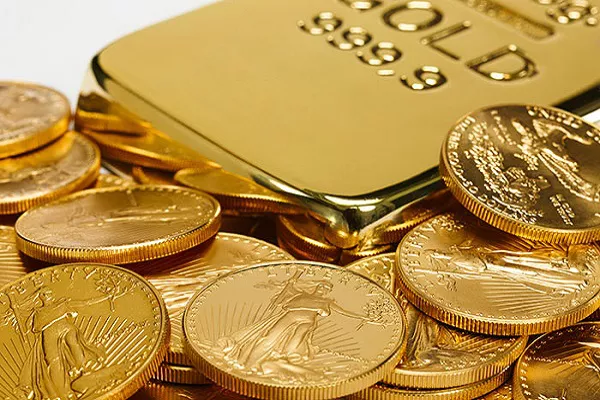Gold has captivated human societies for millennia, valued for its rarity, beauty, and enduring allure. When it comes to gold jewelry, understanding its worth involves a blend of factors ranging from its intrinsic properties to market dynamics. Let’s delve into what determines the value of gold jewelry and how you can assess its worth.
1. Gold Composition and Purity: What Makes Gold Jewelry Valuable?
Gold jewelry’s value hinges significantly on its purity, measured in karats. Pure gold is 24 karats (24K), but it’s too soft for most jewelry applications. Therefore, gold is typically alloyed with other metals like silver, copper, or zinc to enhance durability. The karatage indicates the proportion of pure gold in the piece; for instance, 18K gold contains 75% gold (18 parts pure gold out of 24). The higher the karatage, the higher the gold content—and often, the higher the value. Beyond karats, the actual weight of gold in the jewelry also matters. Jewelers calculate the value based on the weight of pure gold present, often referred to as the gold’s “fine weight.”
Understanding the gold content of your jewelry involves inspecting hallmark stamps. These stamps denote the karatage and can be found in inconspicuous areas like the clasp or inner band of rings. Assessing purity is crucial because higher karat gold commands higher prices due to its greater gold content. This factor directly impacts appraisal values and potential resale prices. Moreover, the color of gold—whether it’s yellow, white, or rose—results from different alloy combinations, with white gold usually being plated with rhodium for a brighter finish. These intricacies all play into the overall value of gold jewelry, shaping its desirability and market worth.
2. Market Factors and Pricing: How Does the Market Influence Gold Jewelry Value?
The value of gold jewelry is intimately tied to broader market forces that dictate gold prices. Gold is a globally traded commodity, with its price fluctuating daily based on supply, demand, economic conditions, and geopolitical events. Therefore, the current market price of gold significantly impacts the appraisal value of your jewelry. Jewelers and appraisers use the daily spot price of gold as a baseline, factoring in other elements like craftsmanship and aesthetic appeal to determine the jewelry’s worth.
In addition to market dynamics, historical context can influence the value of gold jewelry. During times of economic uncertainty or inflation, gold often serves as a safe-haven investment, driving up its price and consequently increasing the worth of gold jewelry. Conversely, periods of stability or strong economic performance may dampen gold prices, impacting the appraisal value of your jewelry holdings. Understanding these market nuances empowers consumers to make informed decisions regarding buying, selling, or valuing their gold jewelry, ensuring they capitalize on favorable market conditions.
3. Craftsmanship and Design: Does Jewelry Design Impact its Value?
Beyond its gold content and market influences, the craftsmanship and design of gold jewelry contribute significantly to its value. Artistry, intricacy, and brand reputation can elevate a piece of jewelry from mere commodity to coveted heirloom. Handcrafted pieces or those bearing the signature of renowned designers often command premium prices due to their uniqueness and perceived artistic value.
The condition of the jewelry also plays a role in its appraisal. Well-maintained pieces with minimal wear and tear retain their value better than those showing signs of damage or significant alterations. Antique or vintage gold jewelry may fetch higher prices due to their rarity and historical appeal. The cultural significance attached to certain designs or motifs can further enhance the value, particularly in collector markets. Ultimately, the aesthetic and craftsmanship aspects of gold jewelry intertwine with its intrinsic value, reflecting the intersection of art and economics in the world of fine jewelry.
4. Evaluating Resale and Appraisal: How Can You Determine the Worth of Your Gold Jewelry?
For individuals looking to evaluate or sell their gold jewelry, understanding the appraisal process is essential. Professional appraisers assess jewelry based on factors such as gold purity, weight, market conditions, craftsmanship, and condition. It’s advisable to seek out reputable appraisers who are certified and experienced in valuing jewelry. Appraisal values can vary depending on the purpose; insurance appraisals focus on replacement value, while resale appraisals consider market prices.
When selling gold jewelry, consider multiple factors such as current gold prices, the buyer’s reputation, and any sentimental value attached to the piece. Selling to reputable jewelers, pawnshops, or online platforms can yield competitive prices, but it’s crucial to compare offers and understand the associated fees or commissions. Keep in mind that sentimental value, such as family heirlooms or vintage pieces, may not always align with market value but can hold significant personal worth.
See also What Happens to Gold When Interest Rates Rise?
In conclusion, the value of gold jewelry is a multifaceted concept encompassing material purity, market dynamics, craftsmanship, and personal sentiment. By understanding these factors and engaging with trusted professionals, individuals can navigate the complexities of valuing, buying, or selling gold jewelry with confidence and informed decision-making. Gold’s timeless allure continues to make it a prized possession, embodying both tangible value and intangible beauty in the realm of fine jewelry.


